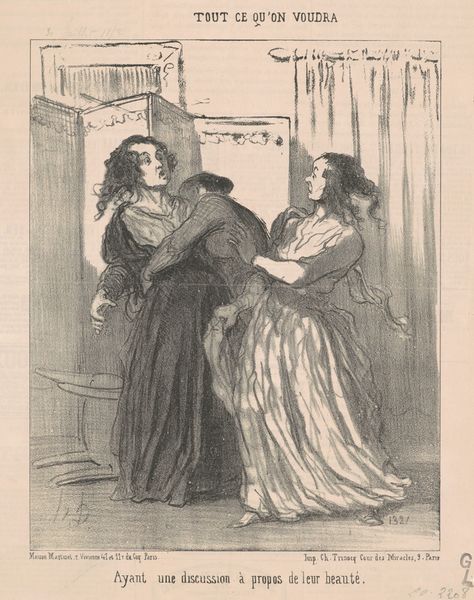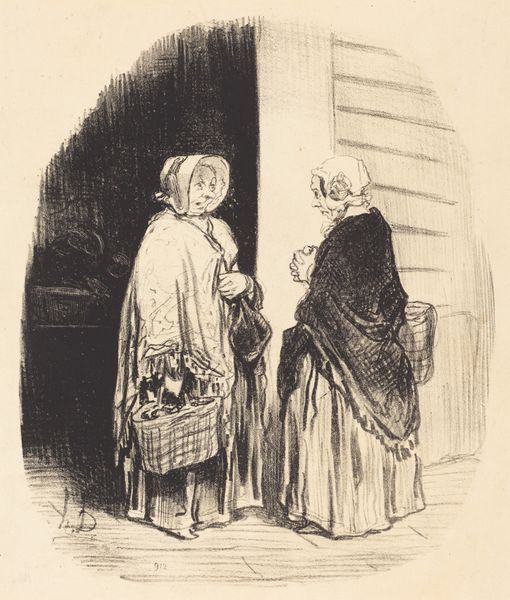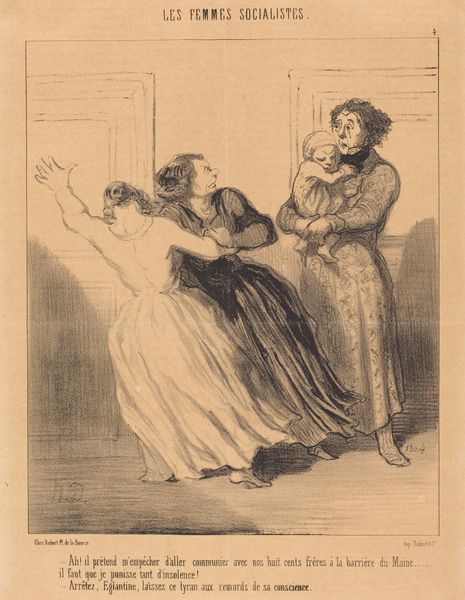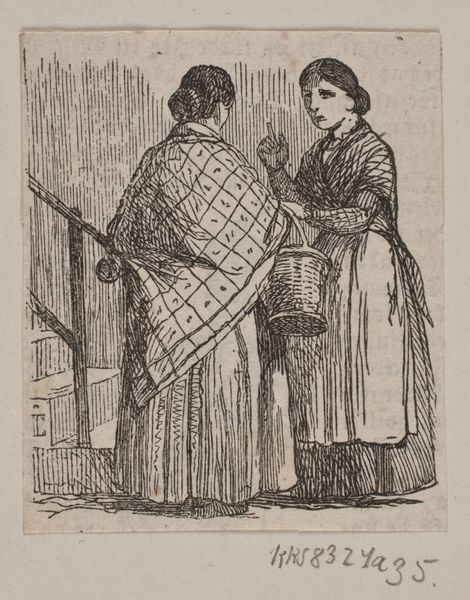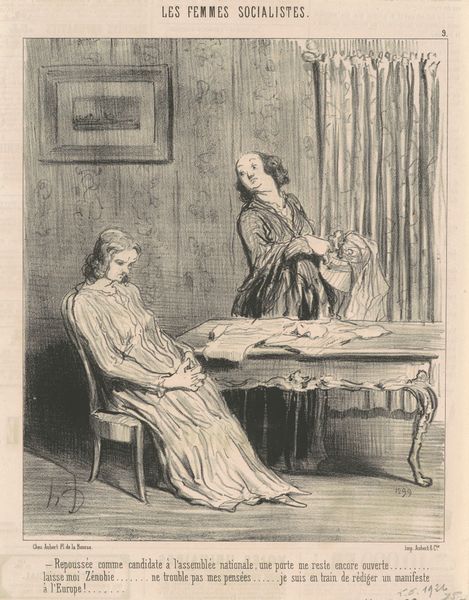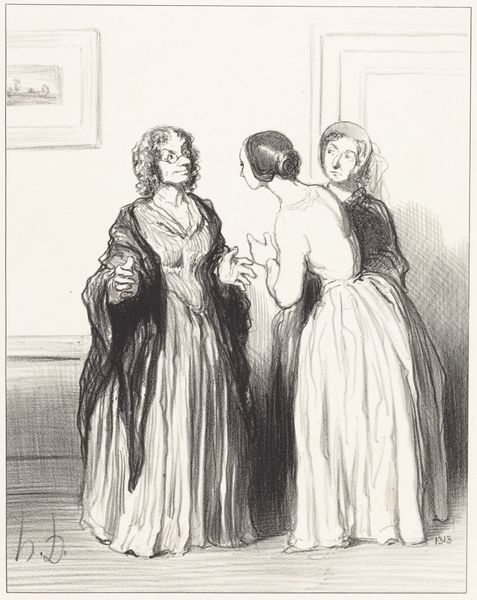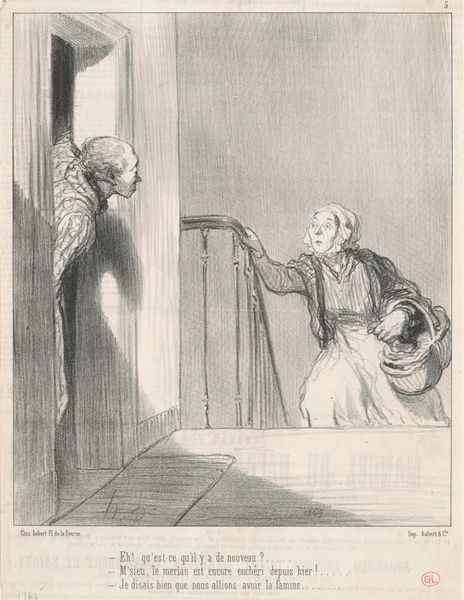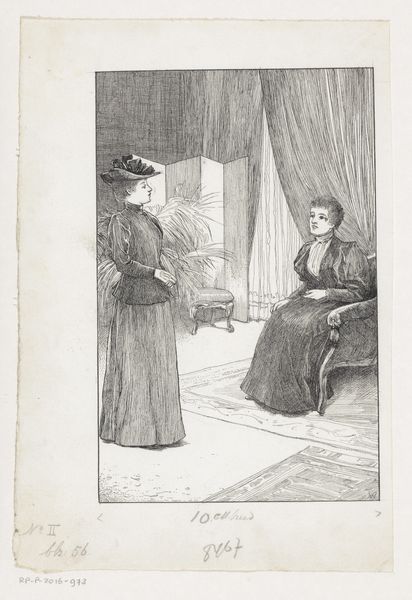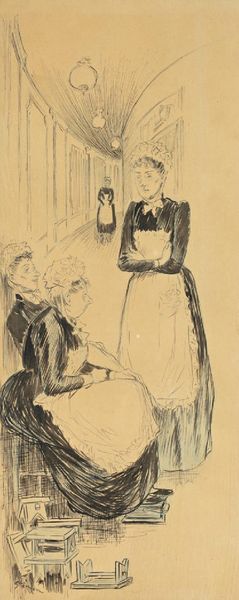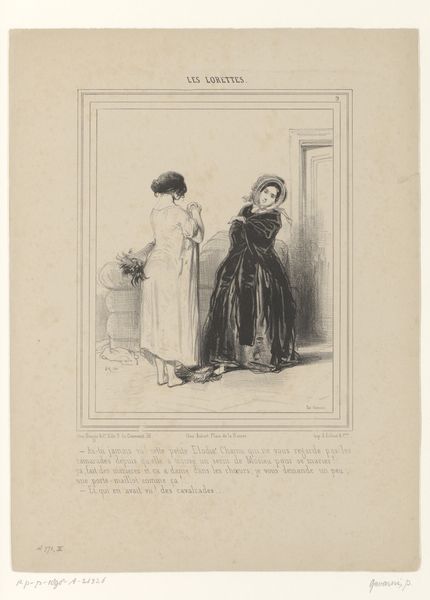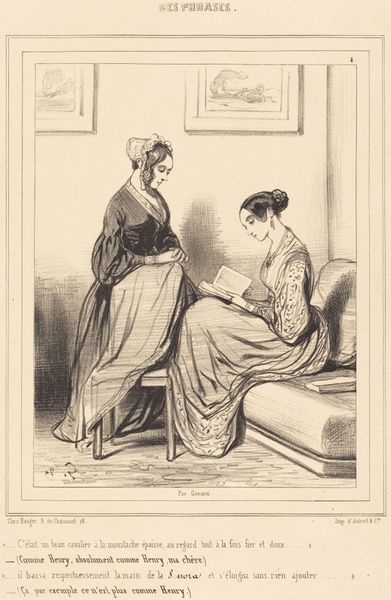
lithograph, print
#
16_19th-century
#
lithograph
# print
#
french
#
caricature
#
genre-painting
Copyright: National Gallery of Art: CC0 1.0
Curator: Daumier's lithograph, "Mon pauvre Azor qu'est mort!...", likely dating from the mid-19th century, offers us a glimpse into... well, something peculiar. Editor: My immediate impression is bleak comedy. Two older women, draped in fabric that swallows their forms, seem caught in a moment of overstated grief. There’s almost a burlesque feel to their sorrow. Curator: Indeed, the scene borders on the absurd. The title translates to "My poor Azor is dead!", and the subtitle then instructs that a letter must urgently be sent to General Grammont! The scale of the reaction is wildly disproportionate. Daumier excelled at capturing societal hypocrisies through caricature. What catches your eye regarding the materiality of this lithograph? Editor: The cross-hatching technique really draws me in. You see Daumier using simple means, like those lines, to generate form and weight in the figures. It makes me think of the working-class roots of lithography as a mass-produced, democratic art form in 19th-century France. And let’s consider that stone—that specific slab of Bavarian limestone upon which this image was first born—imagine the labor. Curator: I always consider his deft use of light and shadow in building this emotional scene. Daumier masterfully manipulates the grey tones achievable with lithography to heighten the pathos. He turns a commonplace medium into pure theatre. Azor's demise suddenly looms large with its implied aristocratic absurdity. It’s like looking at an illustration pulled from Balzac or Flaubert! Editor: Right, this kind of genre-painting print allowed a biting critique of power dynamics and the foibles of the bourgeoisie, but also, to me, raises questions about art's role in upholding existing class structures when you consider who consumed it and how it was circulated as a product of labor. Curator: To contemplate Daumier's choices in printmaking reveals so much: both about a long lost little dog called Azor, but also how human emotions can so often mask social critique. Editor: Agreed, that through exploring production and consumption we might reveal Azor, not as some little lapdog, but instead as a real symptom.
Comments
No comments
Be the first to comment and join the conversation on the ultimate creative platform.

